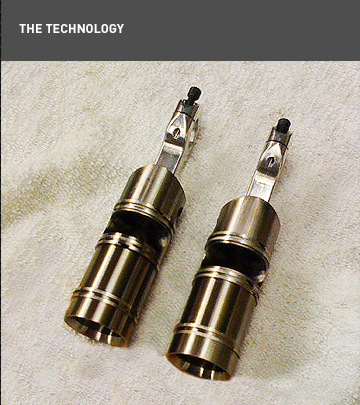
Smarter than conventional valves. It glides.
Our idea has history. The steam engine depended on a rectilinear slide valve to control the admission of steam into, and emission of exhaust from, the cylinder. The GlideValve operates in a similar manner. But that’s where the parallels end. The patented head design was originally externally belt-driven, increasing efficiency and reducing complexity, because there is no cam shaft required. With fewer valve train parts – three moving parts per valve – there is less to go wrong. Not to mention a lower cost per unit. After testing proved the concept of the design, it quickly became obvious to obtain the maximum volumetric efficiency of the engine that actuators driving the valves would be the future of the design, requiring only two moving parts per valve.
There is no need for hand assembly. Automated assembly – even robotic assembly – can be achieved unlike with conventional valve manufacturing. No need for head gaskets or head bolts. With no overhead camshaft engine height is reduced. Car designers will have more freedom to manage hood aerodynamics, aesthetics and ultimately fuel efficiency.
Another design advantage is that the GlideValve technology can be implemented as a component to existing engines, no matter the type, or be introduced as a new engine design, manufactured as one piece, providing more options and flexibility, bolts or head gaskets would not be required.
